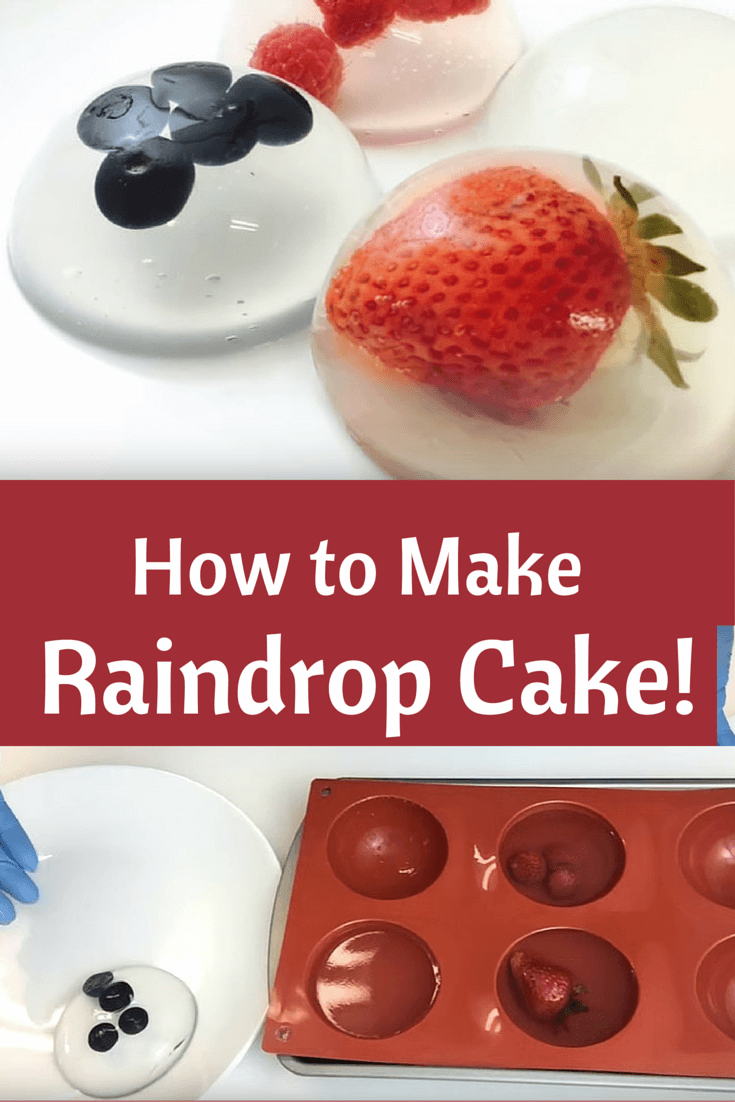

The saucepan is set in cold water so that the agar cools quickly, and the resulting gel is set in a spherical mold and refrigerated for an hour. (Some recipes add sugar to the mix.) The agar is placed in a saucepan and stirred, with water added slowly to avoid lumping, and then brought to a boil. The raindrop cake is at first glance simple to make, with only two ingredients: water and agar, a polymer derived from red algae that is somewhat firmer than animal-derived gelatin. Versions also turned up in restaurants in Australia and Hong Kong. Chef Darren Wong introduced his version to New York’s Smorgasburg outdoor food market in 2016, with its sale, as in Japan, restricted to summer weekends, and the raindrop cake soon became a food fad item much in demand. Other firms in Japan developed variations of the cake. It quickly became popular, with visitors queueing up at the confectioner’s shop in such large numbers that Kinseiken Daigahara limited production to 300 cakes a day.

The raindrop cake was first developed in 2014 by the Kinseiken Daigahara confectioner in the small town of Hokuto, using water from the Japanese Alps it was marketed as “water you can eat.” Molded into a raindrop shape, it was as evanescent as a rain shower, available for sale there only on weekends and public holidays in summer. The raindrop cake adds water ( mizu) and uses seaweed-derived agar instead of flour. It is a variation of the traditional shingen mochi, a sweet cake made of glutinous rice flour and sugar. Without refrigeration, the dessert loses its shape in about 30 minutes.Ĭalled mizu shingen mochi in Japanese, the raindrop cake originated in Yamanashi prefecture, near Mount Fuji and about 145 km (90 miles) west of Tokyo. It is virtually calorie-free and has a fresh, subtle taste. Raindrop cake, delicate gelatinous dessert of Japanese origin that is made of spring water or mineral water and agar powder and that derives its name from its large raindrop shape. SpaceNext50 Britannica presents SpaceNext50, From the race to the Moon to space stewardship, we explore a wide range of subjects that feed our curiosity about space!.Learn about the major environmental problems facing our planet and what can be done about them! Saving Earth Britannica Presents Earth’s To-Do List for the 21st Century.Britannica Beyond We’ve created a new place where questions are at the center of learning.100 Women Britannica celebrates the centennial of the Nineteenth Amendment, highlighting suffragists and history-making politicians.
Raindrop cake recipes how to#
COVID-19 Portal While this global health crisis continues to evolve, it can be useful to look to past pandemics to better understand how to respond today.Student Portal Britannica is the ultimate student resource for key school subjects like history, government, literature, and more.Demystified Videos In Demystified, Britannica has all the answers to your burning questions.This Time in History In these videos, find out what happened this month (or any month!) in history.#WTFact Videos In #WTFact Britannica shares some of the most bizarre facts we can find.Britannica Classics Check out these retro videos from Encyclopedia Britannica’s archives.Britannica Explains In these videos, Britannica explains a variety of topics and answers frequently asked questions.If you handle the cake too much or if it gets to be room temperature after a while, it will collapse. Eat your cake within 30 minutes of taking it out of the refrigerator.

The goal is to transfer the cake onto a plate intact. Be very careful if you use a spoon, as it could ruin the cake's form.



 0 kommentar(er)
0 kommentar(er)
